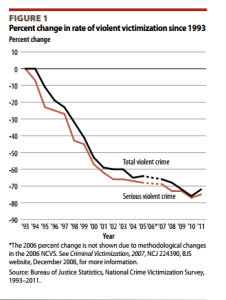Welcome to the beginning to learn page for women’s self-defense. The goal of this page is to provide you with a foundation for your understanding of self-defense and conflict management in an easy to learn fashion.
- Recommended Book: The Gift of Fear
- Recommended Book: What Every BODY is Saying: An Ex-FBI Agent’s Guide to Speed-Reading People
- Recommended Book: Where to Draw the Line: How to Set Healthy Boundaries Every Day
- Downloadable e-booklet: Physical Assertiveness by Erik Kondo
- Download the printable handout: Popular Myths and Useless Soundbites of Self-Defense by Erik Kondo
- Listen: Gershon Ben Keren: “Krav Maga” | Talks at Google
- Listen: TED Radio Hour – How Do You Deal With Fear Versus Danger?
- Listen: TED Talk – Karen Thompson Walker: What fear can teach us
- Listen: TED Talk – Your Body Language Shapes Who You Are – Amy Cuddy
- Listen: TED Radio Hour – Why Do Good People Do Bad Things?
- Listen: TED Talk – Pamela Meyer: How to spot a liar
- Read What If….? – Andrea Harkins (Conflict Manager, SEPTEMBER, 2015)
- Read: Why Personal Safety Rules Simply Don’t Work – Gershon Ben Keron (Conflict Manager: SEPTEMBER, 2015)
- Read: How to deal with Cock Roaches and sundry vermin. – Anna Valdiserri (Conflict Manager: MARCH, 2016)
Start off by reading this interview by Lena Dunham with Gavin DeBecker, the author of the widely read Gift of Fear.
Read: The Lenny Interview: Gavin de Becker
Interview take away points
a. Most women live in fear of being assaulted while walking alone at night.
b. The most likely attacker is an intimate partner, not a stranger.
c. Many women are victimized by Persuasion Predators who take advantage of their socially conditioned desire to appear nice combined with their fear that appearing “bitchy” will encourage an attack. When in reality, assertiveness is a deterrent to being attacked.
d. Women need to use explicit communication for young men to “hear” them.
e. Violence is universal to both genders. An important step for women developing self-defense effectiveness is having realization that they are inherently capable of using violence too.
Next, take a moment to complete this online quiz.
 Now it is time to evaluate what is being said in terms of what you currently believe. You are being told that:
Now it is time to evaluate what is being said in terms of what you currently believe. You are being told that:
- Crime has decreased and women are safer than they think they are.
- Despite being afraid of being assaulted by men on the street, this type of attack is unlikely.
- Men are unlikely to assault you for being assertive and saying “No!”.
- Women are inherently capable of using violence as a tool for self-defense.
These four points appear to run counter to what women have been told by certain sources which is:
- 1 in 3 women will be assaulted in their life time.
- Men are constantly harassing women on the street
- There are many examples of men attacking women for rejecting them.
- Men are responsible for almost all violence.
Therefore, it is important to acknowledge that the goal this section is to increase your ability to protect yourself. It is not about debating the problem of male violence. This section is about improving your chances of not becoming a victim of violence. It is about encouraging social change one woman at a time starting with you.
Therefore, it is imperative to acknowledge that in general:
- Men don’t understand what it is like to be a woman, and therefore, men should not tell women how they should respond to men.
- Women don’t understand what is like to be a man, and therefore, they don’t have the same insight into what actions may encourage male violence and what actions may deter it.
- As a result, there are many women’s organizations that promote ineffective methods for dealing with men as part of their overall mission of creating social change. While these methods may be effective in bringing awareness and support to their cause, they do not provide women with specific methodologies to keep them safer. To put it plainly, the personal safety of individual women is being sacrificed for the politics of creating social change.
The above differing viewpoints can be summarized by two world views.
World View #1.
The world is a dangerous place for women. Men are strong and violent. Women are weak and non-violent. Men are likely to attack women who don’t submit to them.
Word View #2.
There are environments in the world that are dangerous for women (and men). There are environments which are relatively safe. Men and women are each capable of being violent. Sometimes submitting is an effective strategy, sometimes it is a poor strategy. Many times, clear and assertive communication of personal boundaries is an effective strategy. Sometimes, women (and men) need to employ violence to defend themselves.
Self-defense is about what actions you take.
The actions you take are determined by your assessment of the situation.
Your assessment is determined by how you perceive the situation. All of these are subject to your “world view”
If you believe in World View #1, then it is natural that “being nice” and submitting is your primary strategy (action) when dealing with men. It also makes sense that you would “fight back” by advocating social change in an effort to make men less violent.
But if you believe in World View #2, and if you find yourself in an environment described by World View #1, then an effective strategy (action) is to leave or escape that environment for a safer one. It is because you realize the danger of your current situation that you exit it.
If you find yourself in a situation where you are unable to leave, you may have to use violence to enforce your personal boundaries. You use violence because you recognize it’s necessity and effectiveness. You utilize your inherent natural abilities to execute force or submit (your action) as determined (your assessment) by the situation.
Read: Your Nature by Rory Miller
Read: Men and Women, Big and Little by Rory Miller
Read: The Paralysis of Hope by Rory Miller
Read: The Most Dangerous Place in the World by Kathy Jackson
Traditional Women’s Self-Defense
Traditional women’s self-defense is based on a problem solving methodology that defines the problem and next applies the solution.
In terms of traditional women’s self-defense, the following applies:
- The Problem: 1 in 4 women sexually assaulted during their lifetime.
- The Solution: Teach women skills to fight-off Bad Guys.
The Problem breaks down into:
(1) 1 in 4 women sexually assaulted
The Solution breaks down into:
(3) to fight off
(4) Bad Guys
(5) So they don’t become victims of sexual assault.
The following links and references creates images and a view of mostly western middle to upper class, white teenage girls and women, all equally at risk of forcible sexual assault from a variety of creepy and dangerous male strangers who physically overwhelm their randomly selected victims.
This is the Traditional Women’s Self-Defense Paradigm Viewpoint. It is commonly held.
It is promoted by the Merchants of Fear that have a vested interest in advocating this viewpoint:
- The martial arts and self-defense training industry
- The firearms industry
- Law Enforcement
- “Tough on Crime” politicians
- Self-Defense Products Industry
- The News Media
- The Entertainment Industry
The Traditional Women’s Self-Defense Paradigm Viewpoint is the most widely held view of both the problem faced by women and the most effective solution.
Evolving Your Viewpoint of Self-Defense
Read: On Truth and Full Knowledge – Marc MacYoung
Read: Flat Earth Knowledge: Our arrogance over knowing what ain’t so – Marc MacYoung
Fear and Threat Assessments
Self-defense methodologies are effectively program solving systems. Determining the “threat” corresponds to identifying the problem. There is a “cost” or trade-off associated with personal safety and risk reduction. The trade-off of risk reduction usually involves less opportunity to engage in certain “risky” (fun) activities.
Taking extra-safety precautions requires extra-effort (a cost) as opposed to taking no safety precautions. The cost could also be the consequences of taking action.
There is also a cost of over-estimating the presence of danger. That cost results from the associated fear of the danger. Fear of crime, particularly sexual assault, among women is a factor that causes harm in many women’s lives. This fear causes them to limit their activities and engage in numerous safety rituals. It creates increased stress and anxiety. It serves as a form of social control. It causes many women to be passive and not stand up for themselves for fear of being assaulted in retaliation and possibly raped. It makes them fear to take public transportation or afraid walk their neighborhood after dark.
On a societal level fear creates more distrust of other people, particularly men of color. Trust is an essential element of successful civilizations. Distrust the byproduct of fear. Defining women as the perpetual victim class reinforces societal beliefs that women need to be protected by men and don’t have the capabilities to fend for themselves.
Read: Fear Management vs. Danger Management – Marc MacYoung
Recommended Book: Nothing Bad Happens to Good Girls: Fear of Crime in Women’s Lives
Recommended Book: Fear of Crime: Interpreting Victimization Risk
The goal of self-defense is to minimize the negative consequences of unwanted aggression and create peace of mind.
The goal is not to make women into better fighters. It is not to burden them with excessive risk reduction and hypervigilance verging on paranoia.
Fear is the result of a person’s assessment of danger. This assessment is the sum of evaluation multiple factors:
- Chance or odds of an event occurring.
- Control over the event occurring.
- Capability to handle to event.
- Consequence of the event if it occurs
- Coping ability after the event.
Read: To Fear or Not to Fear – Erik Kondo
Statistics and beliefs promoted by the Merchants of Fear create in many women the image of living in a risky world where all women are at constant risk of a violent assault from powerful man that results in rape and possible murder and there is little they can do about it. In reality, the rate of violent crime in the US is down dramatically.

Read: The Fear Profiteers: How They Manipulate and Harm You and Society – Erik Kondo
This fear has the direct result of making it more difficult for women and girls to make accurate situational threat assessments based on evaluations as opposed to emotions. Many women and girls develop dispositional fear that causes them to be overly fearful in non-dangerous environments. They think any man deemed to be creepy as a dangerous serial predator. They emotionally “freeze” [video] in fear in reaction to a threat as opposed to making a clear headed decision and calculated response.
Read: F.E.A.R. – False Evidence Appearing Real.
A lifelong fear of Stranger Danger causes many women to under estimate the danger posed by people they know and who use systematic personal boundary violations to assess victim vulnerability and abuse victims.
In this section, we will learn by examining college based sexual assault.
Solving the problem of sexual assault requires determining what are the common circumstances of these assaults. There are three basic elements of sexual assaults, the Predator(s), the Victim(s), and the Scenario of Events.
Who are the predators?
The serial rapist is not who you think
Rape Fact Sheet
Drawing from the above, it appears that the majority of sexual assaults are the result of a small percentage (6%-12%) of men who are repeat offenders.
What is the typical Scenario of Events?
Taken from Meet the Predators blog post:
“Of the men who used only force against their victims, none reported raping a stranger; all the men knew their victims… [T]he stereotypical rape incident characterized by a man violently attacking a stranger was not reported by any of the respondents. Instead, respondents who used only force against their victims reported raping only women they knew. Men who targeted strangers exclusively reported they used substances only in the rape incident.
These findings may help explain why most self-reported [attempted or completed rape] incidents go undetected.”
McWhorter, p. 212-13.
From the Rape Fact Sheet:
“These undetected rapists:
• are extremely adept at identifying “likely” victims, and testing prospective victims’ boundaries;
• plan and premeditate their attacks, using sophisticated strategies to groom their victims for attack, and to isolate them physically;
• use “instrumental” not gratuitous violence; they exhibit strong impulse control and use only as much violence as is needed to terrify and coerce their victims into submission;
• use psychological weapons – power, control, manipulation, and threats – backed up by physical force, and almost never resort to weapons such as knives or guns;
• use alcohol deliberately to render victims more vulnerable to attack, or completely unconscious.”
Predators are most likely to use force against people they know as opposed to people they don’t know. Why? Because using violence against a stranger increases the chances that the victim will report the crime. But, in an intimate partner situation, the Predator may have already determined that violence works against his chosen victim AND his victim will be silent.
Who are the Victims?
Sexual assaults vastly underreported on campus: Part I, Part II, Part III
“SULLIVAN: It is clear that we have a need for greater education. One of the things we learned is that a woman is most likely to be subject for sexual assault during her first three weeks on the university campus.”
The Campus Sexual Assault (CSA) Study 2007
Page 34: 2.3.1 Prior Victimization: “One of the strongest predictors of sexual assault is prior victimization.”
Page 35: 2.3.2 Substance Use: “Regardless of prior victimization status, alcohol consumption by the victim is a major risk factor for sexual assault.”
Page 36: 2.3.3 Age and Year of Study: “Freshmen and sophomore women appear to be at greater risk of being victims of sexual assault than are upperclassmen.”
Page 36: 2.3.5 Residential Status: “The Harvard College Alcohol Study found that students who resided in sorority houses and on-campus dormitories were more likely to report experiencing rape than students residing off campus.”
Page 36: 2.3.6 Sorority Membership: “Sorority membership itself has been identified as a risk factor for sexual assault, including being a victim of alcohol or drug coercion.”
Page 37: 2.3.7 Dating Violence History: “(NCHA) study found that women who were physically abused by a dating partner in any year were more likely to be sexually assaulted that year.”
Page 37: 2.3.8 Consensual Sexual Experiences: “Engaging in consensual sexual activity is a risk factor for sexual assault (Tyler, Hoyt, & Whitbeck, 1998).”
Regarding the (1 in 4) 1985 Mary Koss Study:
“Koss also found that 42 percent of those she counted as rape victims went on to have sex with their attackers on a later occasion.” (Page 4)
——————–
Center or Problem Oriented Policing
————————————————
In terms of describing the overall circumstances of college based sexual assault, it appears that the majority of the incidents involve serial male predators with high social status combined with aggressive sexual tendencies who are able to selectively target, isolate and coerce vulnerable female victims who are unlikely to report their victimization.
This is a systemic problem that can be described by the Violation Triangle of INEQUALITY of Relative Power/Control/Status between the Predator and Victim and INTENT to violate by the Predator and purposeful ISOLATION of the Victim from her protective resources.
Is Self-Defense Effective?
Take a look at some of these articles and studies and decide for yourself.
Go to the Is Women’s Self-Defense Effective? opposing viewpoints section.
Considerations
Read: WHAT YOU DON’T KNOW ABOUT WOMEN’S SELF DEFENSE COULD HURT YOU, PART I – By Teja Van Wicklen
Read: WHAT YOU DON’T KNOW ABOUT WOMEN’S SELF DEFENSE COULD HURT YOU, Part II – Teja Van Wicklen
The intent of the Women’s Self-Defense Beginning to Learn section is to create a foundation to expand upon in the following sections. This section is less about providing answers and more about expanding your viewpoint on what constitutes common violations, effective self-defense, and building understanding how many women’s socialization and exposure to the agendas of the Merchants of Fear has been detrimental to their ability to defend themselves.





















